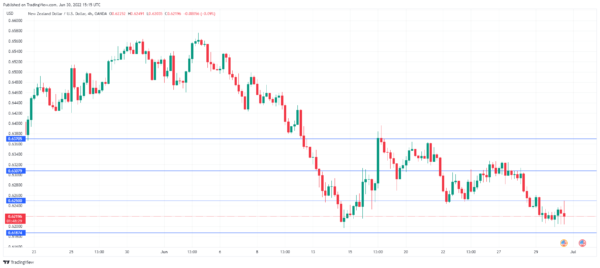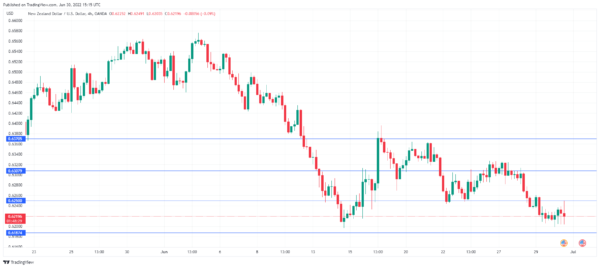The New Zealand dollar is steady on Thursday. Earlier in the day, NZD/USD fell below the 0.62 line before recovering, coming within a whisker of 0.6996, its lowest level since May 2020.
NZ Business Confidence sags
It was another rough outing for New Zealand ANZ Business Confidence, which fell in June to -62.6, down from -55.6 in May. This not only marked a 12th straight decline but also was a near-record low. There’s no sugar-coating the increasing pessimism that businesses are experiencing about the economic outlook. Domestic demand is holding up well, but businesses continue to report being severely hampered by supply-side disruptions and cost pressures. This is consistent with inflation pressures which remain broad-based and intense.
We’ll get a look at ANZ Consumer Confidence on Friday. Last week, Westpac Consumer Confidence fell sharply to 78.7 in Q1, down from 92.1 in Q4 2021 and I don’t expect the ANZ release to be the bearer of good news. Consumers have been hammered by the cost of living crisis, as food and petrol prices have soared. The pressure on households has been exacerbated by the Reserve Bank of New Zealand continuing to raise interest rates, with more hikes on the way. The rise in mortgage rates has left households with less disposable income, with many seeing a drop in their assets as home prices have fallen.
If the ANZ consumer confidence release confirms that consumer confidence is heading south, this could translate into lower consumer spending, which would be bad news for the New Zealand economy. It could have a significant effect on the Reserve Bank’s policy. If consumer demand sinks, the central bank may have room to ease its rate policy. The RBNZ has been tightening aggressively and the cash rate, which is currently at 2%, is expected to rise to 3% by the end of August and possibly to 4% in 12 months’ time.
NZD/USD Technical
- NZD/USD faces resistance at 0.6307 and 0.6370
- There is support at 0.6250 and 0.6187



 Signal2forex.com - Best Forex robots and signals
Signal2forex.com - Best Forex robots and signals




